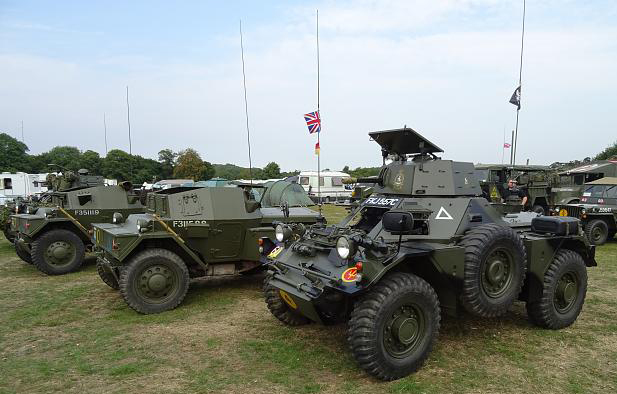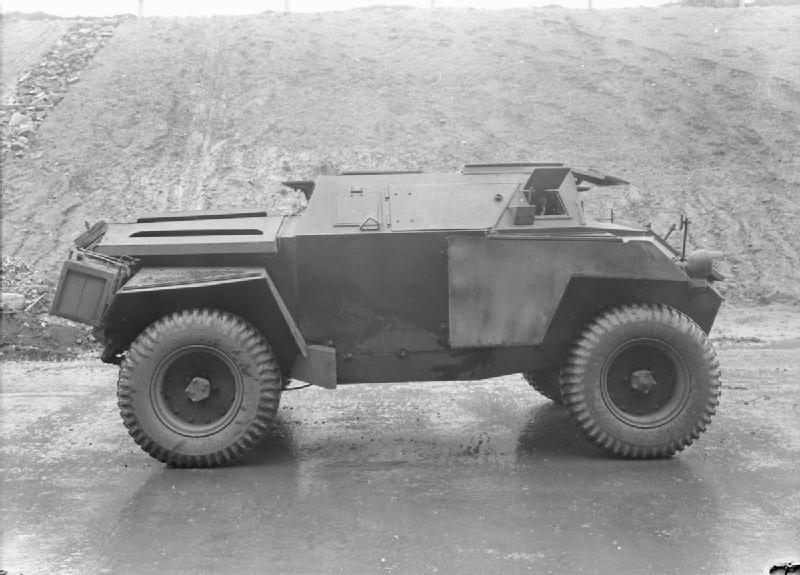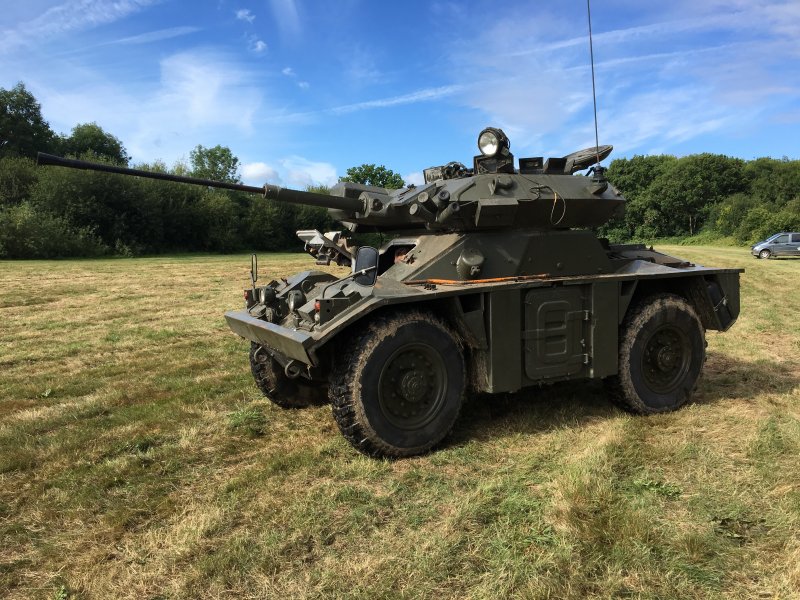The armoured car pre-dated the tank, the Fiat Arsenale being used by the Italians in Libya during the Italo-Turkish war of 1911-1912. Unlike later conflicts, the Italians were brilliantly ahead of their time, and also carried out the first airstrike during this first modern war of the 20th century.
Forerunners to the Ferrret
As far back as 1914, George Lanchester developed the armoured car so named after him. It was built with a 4×2 configuration, followed in the late 1920s by a more robust Lanchester 6×4 configuration for cross-country performance. Like the Dingo and the Ferret later, these cars had reinforced suspension and equal numbers of forward and reverse gears. The army tested these Lanchesters extensively in 1930, but cancelled the order after 12 were delivered, changing their minds about mechanising the cavalry. By the time the original plans were revised, the company had been absorbed into Daimler.
As the army gradually mechanised, a requirement arose for a small 4×4 scout car for reconnaissance and liaison. In 1938 the War Office issued a specification for such a scouting vehicle. BSA Cycles Ltd, Morris Commercial Cars Ltd and Alvis Ltd submitted designs and prototypes for comparative trials by the Fighting Vehicles Proving Establishment. The BSA/Daimler design was accepted, the Daimler ‘Dingo’ * being the result.
The design of the Dingo also paved the way for the ‘Tank, Light, Wheeled’ which evolved into the Armoured Car Daimler Mk 1 armed with a 2-pounder gun and coaxial 7.92 mm Besa machine gun. They had many of the transmission features of the Dingo and later Ferret; total production was 2,694, many of which survive still. Humber produced a very similar scout car because Daimler could not manufacture sufficient vehicles for the Army’s needs. After the war many Humber scout cars were used for target practice, but about 20 still survive.
During WW II Daimler built more than 6,600 scout cars and some 2,700 Mk I and Mk II armoured cars. In late 1948, the British army needed a replacement for their ‘Dingo’ scout reconnaissance vehicle. They turned back to Daimler – the company responsible for the Dingo – to develop the new scout car, awarding a contract under the designation FV701. The Ferret entered service in 1952. The history of its development and proving trials is comprehensively described in Pat Ware’s book Ferret The FV700 Series in British Army Service.
The Daimler Ferret
In 1946, the British army was in need of a replacement for their ‘Dingo’ reconnaissance vehicle which had served them well but was getting on in age. In 1948, Daimler was awarded a contract to design and build a new scout car under the designation FV701. After trials it was adopted for service and was named the Ferret. The first production Ferret, the Mk 2, was completed in mid-1952 and the first production Mk 1 was completed later the same year. Throughout its production life the basic hull of the Ferret remained largely unchanged. Production of the Ferret was finally completed in 1971 by which time 4,409 vehicles of all types had been built.
Successors to the Ferrret
While the Scorpion family fulfilled the army requirement for CVR(T), the CVR(W) requirement was met by FV-721, the Fox. Fifteen prototypes were built by Daimler between November 1967 and April 1969, being accepted into service in July 1970. Two hundred vehicles were made, costing £250k at the time. The 4×4 Fox has a three-man crew: commander, driver and gunner, fitted with a two-man turret armed with the same 30 mm RARDEN cannon and coax 7.62 MG as the Scimitar. The Royal Ordinance Factory at Leeds made the Fox, whilst the turrets were manufactured by Alvis. Another version of the Fox, the Vixen was intended as a liaison vehicle to replace the Ferret, but was cancelled in the defence cuts of 1972.
Alvis planned a successor to the Ferret family, the Ferret 80, being a highly-mobile light reconnaissance vehicle, intended principally for export. It featured a redesigned hull with aluminium armour, a Perkins T.6 3544 diesel engine and automatic transmission. At its heaviest (7 tons) it featured a large Helio FVT 900 turret fitted with a 20 mm autocannon and coaxial GMPG; the commander version had a two-men tandem configuration. The Ferret 80 remained a prototype, never entering production.
References:
- Michael Green (2017) Allied Armoured Fighting Vehicles of the Second World War Pen & Sword, ISBN = 978-1-47387-237-0
- Tanks Encyclopedia: Dingo
- Tanks Encyclopedia: Daimler Ferret
- Pat Ware (1997) Ferret The FV700 Series in British Army Service Warehouse Publications, ISBN = 978-095255-630-5
- Daimler Fighting Vehicle website
* Ironically, Alvis named their prototype the ‘Dingo’ yet this was not chosen.
The official name of the successful BSA Cycles/Daimler bid was ‘Car, Scout, Mark I’ but the soldier’s name ‘Dingo’ was soon universally adopted.
Oliver Winterbottom describes in his book in chapter 2 how, as a Jaguar apprentice, he learnt to drive on a Ferret and attendance at the final proving trial.
The Fox isn’t as easy to get into as the Ferret. Visibility to each side whilst driving is also poorer.





